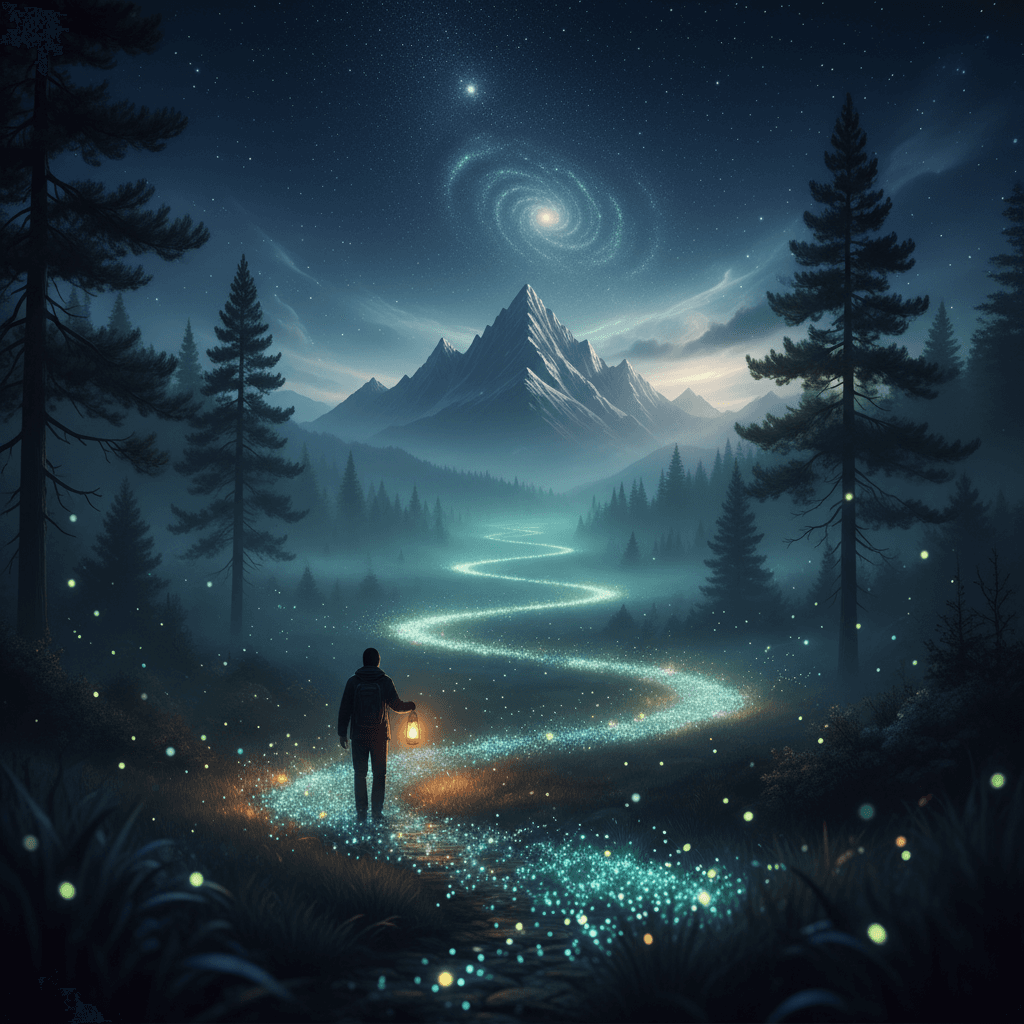Curiosity as Compass on the Path to Meaning

Follow what fascinates you; within curiosity lies the road to meaning. — Carl Jung
Jung’s Compass: Fascination as Psychic North
To begin, Jung’s dictum frames fascination not as a whim but as a directional force. In his reworking of libido as general psychic energy (Two Essays on Analytical Psychology, 1917/1928), he argued that where attention quickens, life aims. In practice, Jung followed images from dreams and waking reveries, letting them set the itinerary of his inner work; his later Erinnerungen, Träume, Gedanken (Memories, Dreams, Reflections, 1961) recounts how pursuing these motifs led him to build the Bollingen Tower as a concrete symbol of the Self. Thus fascination functions like a compass bearing—subtle, yet persistent.
From Curiosity to Individuation
From this compass arises a path: individuation, the lifelong process of becoming distinct yet whole. When we trace what fascinates us, we often meet the Shadow that both frightens and attracts; the energy bound in complexes releases as we integrate disowned traits (Modern Man in Search of a Soul, 1933). Jung’s method of active imagination—dialoguing with images until they disclose meaning—gives curiosity a disciplined form; The Red Book (1914–1930; publ. 2009) shows this practice as an artistic, moral labor. In this way, curiosity is not idle browsing; it is a gradual reorientation of the psyche toward the Self.
Neuroscience of the Seeking Drive
Moving from depth psychology to biology, curiosity maps onto the brain’s dopaminergic SEEKING system (Jaak Panksepp, Affective Neuroscience, 1998; 2012). When novelty or ambiguity appears, circuits in the ventral tegmental area and nucleus accumbens fire, while the hippocampus flags prediction errors, drawing us forward. Daniel Berlyne’s research on collative variables—novelty, complexity, and uncertainty—(Aesthetics and Psychobiology, 1971) shows why the right level of challenge feels meaningful; it stretches but does not snap us. In this light, fascination is not mere pleasure; it is the brain’s way of signaling potential learning and future coherence, which we then experience as nascent meaning.
Echoes from Philosophy and History
History and literature echo this biological tug. As Plato’s Theaetetus (155d) puts it, wonder is the beginning of philosophy, implying that questions, not answers, inaugurate understanding. Renaissance curiosity cabinets gathered shells, maps, and machines to stage the world’s strangeness into insight; likewise, Maria Sibylla Merian’s 1699 voyage to Suriname traced the metamorphoses of insects that Europe had misclassified, letting fascination revise knowledge. Darwin’s Beagle notebooks (1830s) read like field-guides to attention, where a boyhood love of beetles matures into a theory. These stories suggest that when curiosity pulls, it often drags institutions forward.
Practices for Following Fascination
Translating this into daily life, we can ritualize fascination. Keep a compass log: each day, note moments that quickened your attention—an image, problem, or place—and rank them by pull. Then run small breadcrumb experiments: devote 30 minutes to the top item for seven days, asking only, What is this asking of me? Jung’s active imagination can be adapted here: sketch, write, or move until the image shifts, and record the dialogue. To widen serendipity, schedule a weekly dérive—a purposefully aimless walk or reading session guided by what lures you. Gradually, threads recur; follow the thickest strand into a project, apprenticeship, or conversation. In doing so, curiosity becomes a habit, not a mood.
Boundaries, Ethics, and Depth
Yet, as every compass needs a map, curiosity needs boundaries. Novelty can become compulsion or a defense against feeling; set constraints such as time boxes, budgets, and a guiding question. William James’s pragmatism asks for the cash value of an idea in experience (Pragmatism, 1907); similarly, test fascinations by their fruits: Do they deepen relationships, skill, or service? Jung cautioned against inflation—being possessed by archetypal energies; ethics and community provide ballast. With such guardrails, exploration turns from distraction into devotion.
Meaning as Emergent Outcome
Consequently, meaning arrives not when we clutch it, but when we give ourselves to absorbing pursuits. Viktor Frankl observed that meaning ensues as a byproduct of dedicating oneself to a task, love, or suffering borne with dignity (Man’s Search for Meaning, 1946). When we follow fascinations under wise limits, the world answers back with pattern and purpose. Circling to Jung’s insight, curiosity is less a pastime than a path: it leads us, step by step, to the work that is ours to do.